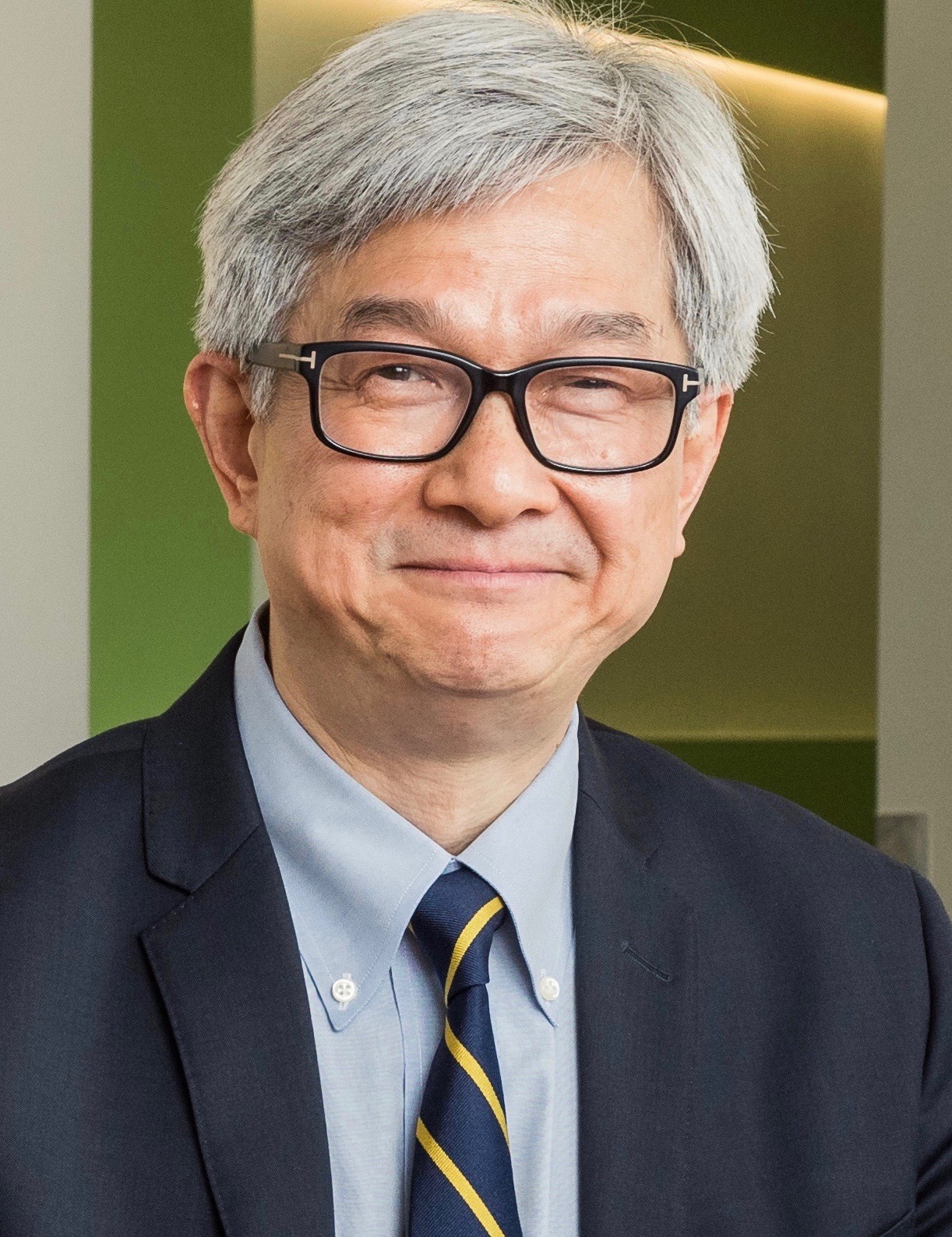Other Track AgendasBiofluid Biopsies | High-Value Diagnostics |

Monday, 16 November 201508:00 | Conference Registration, Coffee, and Breakfast Pastries | |
Session Title: Opening Plenary Session |
| | 09:00 |  | Keynote Presentation Liquid Biopsies in the Management of Cancer
Ellen Beasley, Senior Vice President, Genomic Health Inc, United States of America
Solid tumors that originate in internal organs such as the breast, lung, or bladder often release DNA and tumor cells into the bloodstream or urine. When the presence of tumor-derived DNA in blood is high and persists or increases over time, the cancer is likely growing and a new course of treatment may be appropriate. The ability to reliably measure tumor burden in blood and the evolution of tumor biology over time it will have a transformational impact on the management of cancer. Patients could forego more invasive procedures like tissue biopsies and would not have to wait months to do screenings like PET scans. In real-time management of cancer patients, similar to cholesterol monitoring, we will have the opportunity to guide patients to the right treatment with the right dose more quickly, improving patient outcomes and potentially avoiding unnecessary side effects and cost. |
| 09:30 |  | Keynote Presentation Liquid Biopsies and the Potential to Make Tissue Less of an Issue
Walter Koch, Vice President, Roche Molecular Systems, United States of America
Blood-based testing can reduce test turnaround time and potentially serve as a surrogate for tissue for biopsy ineligible or fragile patients, for whom a tissue sample is not available. Potential uses being explored in clinical studies and trials include 1) identification of genetic determinants that direct targeted therapies (eg EGFR activating mutations in NSCLC for several tyrosine kinase inhibitors), 2) evaluation of early treatment responses, 3) monitoring for minimal residual disease and 4) assessment of disease progression and resistance development. Several technologies are in development for blood based analytes including circulating tumor cells, contents of exosomes released by cancer cells, and cell free circulating tumor DNA (ctDNA). This presentation will exemplify the potential power of Liquid Biopsy approaches using ctDNA analyses with data from several clinical studies involving NSCLC patients undergoing targeted therapy treatment. |
| 10:00 |  | Keynote Presentation Saliva-Based Detection of Actionable EGFR Mutation in Lung Cancer Patients
David Wong, Felix and Mildred Yip Endowed Chair in Dentistry; Director for UCLA Center for Oral/Head & Neck Oncology Research, University of California-Los Angeles, United States of America
Constitutive activation of epithelial growth factor receptor (EGFR) is prevalent in epithelial cancers, particularly in non-small-cell lung carcinoma (NSCLC). EGFR mutation predicts sensitivity to EGFR-targeted therapy and mutation detection is mainly based on tissue biopsy, which is invasive, expensive and time-consuming. Non-invasive, real-time, point-of-care, inexpensive detection and monitoring of EGFR mutations in NSCLC patients is highly desirable. We developed a novel core technology, Electric Field-Induced Release and Measurement (EFIRM), relying on a multiplexible electrochemical sensor that can detect EGFR mutations directly from body fluids. EFIRM for EGFR mutation detection was established in vitro, and correlated with tumor size from xenografted mice. In clinical application, we demonstrated that EFIRM can detect EGFR mutations from saliva and serum of 22 NSCLC patients. And finally, a blinded test was performed on saliva from 40 NSCLC patient saliva samples. The receiver operating characteristic analysis indicated that EFIRM detected the exon 19 deletion with an area under the curve (AUC) of 0.94 and the L858R mutation with an AUC of 0.96. Our data indicate that EFIRM is effective, accurate, rapid, user-friendly, and cost effective for the detection of EGFR mutations in saliva of NSCLC patients. |
| 10:30 | Coffee Break and Networking | 11:00 |  | Keynote Presentation Plasma Extracellular Vesicle Content for Diagnosis and Prognosis of Cardiovascular Disease
Dominique PV de Kleijn, Professor Experimental Vascular Surgery, Professor Netherlands Heart Institute, University Medical Center Utrecht, The Netherlands, Netherlands
Cardiovascular Disease (CVD) is with the cardiovascular events of Ischemic Heart Disease and Stroke, the number 1 and 2 cause of death in the world and expect to increase especially in Asia. Atherosclerosis is the underlying syndrome for CVD and atherosclerotic plaques are detectable already in teenagers. Therefore for cardiovascular disease, we have to determine who is at high risk for a cardiovascular event in a high-risk background of the atherosclerotic syndrome without the possibility of taking a plaque biopsy. The risk for Cardiovascular events is region-dependent so tailored plasma-based biomarkers are essential to guide prevention and treatment of billions. Collecting plasma extracellular vesicles is like taking a liquid biopsy from the pathological tissue that can be used for diagnosis and prognosis of the disease. We show that plasma extracellular vesicle protein content especially when collected from different plasma subfractions can be used as an accurate source for diagnosis and prognosis of cardiovascular disease. |
| 11:30 |  | Keynote Presentation The Evil Little Things About Cancer: EVs as Infiltrators and Informants
Xandra Breakefield, Professor, Mass General Hospital (MGH)/Harvard Medical School, United States of America
Tumor cells release an abundance of extracellular vesicles which contain protein, RNA and DNA cargo. Studies are actively ongoing to determine the different types of tumor-derived vesicles and the function of their cargo, which appears to be designed to change the phenotype of many types of normal cells in favor of tumor progression. These evil-intentioned vesicles have two possible Achilles’ heels. In the first case, they can be isolated from biofluids of the cancer patient and used to inform on the mutational stratagem of the tumors and hence provide clues as to effective treatment strategies. In the second case, vesicles may be transformed into therapeutic vehicles to “silently” attack the tumors. |
| 12:00 |  | Keynote Presentation The Utility of Blood Exosomes from Cancer Patients as Biomarkers for Early Detection
Raghu Kalluri, Professor and Chairman, Department of Cancer Biology, University of Texas MD Anderson Cancer Center, United States of America
|
| 12:30 | Networking Lunch, Visit the Exhibitors, and Poster Viewing | |
Session Title: Circulating Tumor DNA (ctDNA) and Other Biomarker Classes for Biofluid Biopsy Development |
| | 14:00 | Application of Circulating Tumor DNA Biomarkers to Cancer Drug Development
Brian Dougherty, Executive Director, Translational Genomics, Oncology IMED, AstraZeneca R&D, United States of America
| 14:30 | Efficacy of Rociletinib in NSCLC Patients Selected with an EGFR Plasma Test
Chris Karlovich, Associate Director, Molecular Diagnostics, Clovis Oncology, Inc., United States of America
We are exploring blood-based molecular testing in clinical trials of rociletinib, a novel third-generation TKI that selectively inhibits the EGFR activating and T790M resistance mutations in NSCLC patients. The utility of plasma-based EGFR mutational analysis for diagnosis, prediction of response to rociletinib, as a PD biomarker, and for ongoing monitoring of response will be described. | 15:00 |  | Keynote Presentation Ultrasensitive Detection of Circulating Tumor DNA by Deep Sequencing
Maximilian Diehn, Assistant Professor, Stanford University School of Medicine, United States of America
I will describe recent technical and clinical results from analyses of circulating tumor DNA using Cancer Personalized Profiling by Deep Sequencing (CAPP-Seq). |
| 15:30 | Coffee Break, View Posters, Visit Exhibitors and Networking | 16:00 | Circulating Tumor DNA as a Biomarker in Esophageal Adenocarcinoma
Tony Godfrey, Associate Chair – Research, Department of Surgery, Boston University Medical Center, United States of America
| 16:30 | Enabling Urine Biomarker Discovery
Shannon Pendergrast, Chief Scientific Officer, Ymir Genomics, United States of America
The discovery of urinary extra-cellular biomarkers has been impeded by the lack of efficient methods for the isolation of extra-cellular vesicles (exosomes and microvesicles), protein, and nucleic acid. Ultracentrifugation, considered the gold standard for vesicle isolation from many biofluids, is efficacious but laborious, and like most commercially available methods, is unable to consistently isolate enough quality material from small volumes of urine for protein or RNA-based biomarker discovery. Ymir Genomics has invented a novel precipitation reagent that rapidly and efficiently isolates extra-cellular biomolecules and vesicles from urine samples yielding a quantity suitable for biomarker discovery. Ymirite is more efficient than either ultracentrifugation or commercial precipitation methods for isolating extra-cellular nucleic acids and vesicles from a variety of urine samples as evaluated by immunoblot, Nanosight, Electron Microscopy, miRNA microarray, and qRT-PCR. Moreover, unlike all other methods, our reagent was able to isolate vesicles from very dilute samples. Ymir Genomic’s Precipitation Reagent offers a method that, in less than 30 minutes, isolates intact extra-cellular vesicles, protein and RNA suitable for biomarker discovery from urine samples. | 17:00 |  Technology Spotlight: Technology Spotlight:
Multiplexed ICE COLD-PCR (MX-ICP) for Detection of Low-Level Mutations in Liquid Biopsies
Katherine Richardson, Vice President, Research & Development, Transgenomic, Inc.
The use of “liquid biopsies”, where limited or no tumor tissue is available, is increasingly important for molecular demographics, diagnostics and pharmacodynamic monitoring of patients during therapy. The amounts of DNA needed for this low level detection may not be feasible with the limited quantities of blood/plasma/serum obtained from patients on clinical trials. The ability of MX-ICP to enrich alterations can provides a means to evaluate mutations in these samples using lower amount of sample DNA. The benefits of MX-ICP are (1) MX-ICP is a key technology for sensitive detection and monitoring of ALL genetic alterations in multiple targets using a single DNA sample; (2) Less DNA is needed for mutation detection; (3) Mutation quantification is feasible using MX-ICP; and (4) Coupling MX-ICP with platforms like NGS and ddPCR enables high sensitivity detection of mutations at approximately 0.01% in patient samples with limited amounts of DNA. This presentation will describe the technology and give examples of detection and quantification of low-level mutations, including EGFR Exon 19 deletions, the EGFR Exon 21 L858R and both the T790M and C797S mutations in EGFR Exon 20.
| 17:30 |  Technology Spotlight: Technology Spotlight:
Droplet Digital PCR: A Precision Tool for Liquid Biopsy
Svilen Tzonev, Director, Bio-Rad Digital Biology Center
Bio-Rad’s QX200 Droplet Digital PCRTM (ddPCRTM) system has become widely accepted as the tool of choice in detecting and quantifying known and actionable cell-free DNA biomarkers. Main advantages include direct quantification, high sensitivity and specificity, digital precision. ddPCR also offers fast turnaround time (less than a day) with an economical and flexible workflow tolerant to PCR inhibitors. A large number of validated assays for detection of individual or multiplexed rare mutations and copy number alteration somatic variants are widely used in cancer research and translational context. This talk will cover latest technological advances and present examples of translational research in lung, colorectal, melanoma, and breast cancer in assessing tumor response and evolution, emergence of resistance markers and monitoring of residual disease via liquid biopsy in blood.
| 18:00 |  Technology Spotlight: Technology Spotlight:
From Sample to Insight: QIAGEN´s Approach Pioneering the Liquid Biopsy Revolution
Constanze Kindler, Senior Global Product Manager, QIAGEN
Liquid Biopsy has the potential to transform healthcare and biomedical research. The presentation will give an overview on QIAGEN’s approach to provide integrated solutions for isolation of circulating biomarkers and their analysis. The presentation will cover new and existing QIAGEN solutions ranging from sample stabilization, analyte purification, to analysis.
| 18:30 | Cocktail Reception: Premium Beers, California Wines, Appetizers and Networking on the 15th Floor of the Wyndham Boston Beacon Hill with a View of Boston and the Charles River | 20:00 | Close of Day 1 of the Conference. |
Tuesday, 17 November 201507:30 | Morning Coffee, Breakfast Pastries, and Networking | |
Session Title: Biofluids and Analytes for the Development of Biofluid Biopsies |
| | 08:00 |  | Keynote Presentation Long Noncoding RNAs as Putative Biomarkers for Prostate Cancer Detection: Urine as a Biofluid for Liquid Biopsies
Ranjan Perera, Associate Professor, Scientific Director Genomics and Bioinformatics, Sanford Burnham Medical Research Institute, United States of America
Prostate cancer is one of the leading causes of mortality among US males. There is an urgent unmet need to develop sensitive and specific biomarkers for the early detection of prostate cancer to reduce overtreatment and accompanying morbidity. We identified a group of differentially expressed long noncoding RNAs in prostate cancer cell lines and patient samples and further characterized six long noncoding RNAs in prostatic adenocarcinoma tissue samples (Gleason score >6.0) and compared them with matched normal (healthy) tissues. Interestingly, these markers were also successfully detected in patient urine samples and were found to be up-regulated when compared with normal (healthy) urine. Chromogenic in situ hybridization assay was developed to detect long noncoding RNAs in primary prostatic adenocarcinoma tissue samples, paving the way for clinical diagnostics. We believe that these results will set the stage for more extensive studies to develop novel long noncoding RNA-based diagnostic assays for early prostate cancer detection and will help to distinguish benign prostate cancer from precancerous lesions.
|
| 08:30 | Detection of Circulating Tumor DNA by Surface Plasmon Resonance
Sehyun Shin, Professor & Director, Nano-Biofluignostic Engineering Research Center, Korea University and Anam/Guro Hospital of Korea University, Korea South
Circulating tumor DNA (ctDNA) has been demonstrated as the most promising biomarker for non-invasive assessment of cancer as well as the most accurate predictor of cancer treatment responses. However, detection of ctDNA in blood has been faced with conventional technical limits and called for innovative technologies and methods. Here, we present a stable and selective assay for detecting of epidermal growth factor receptor (EGFR) mutation in plasma (or liquid biopsy) using DNA-DNA hybridization and Au nanoparticle probe with a lab-made surface plasmon resonance (SPR) sensometry. We prepared wild type EGFR, mutant EGFR including point mutation and deletion and control (non-complimentary). Linker DNAs coated on a sensor surface of SPR capture different quantities of three different DNA types. Due to characteristics of SPR, the whole process was monitored in real-time and completed within an hour. This study as a proof of concept can be further expanded into multiplexing detection of major and known ctDNAs, which could provide a solution for clinical unmet needs in cancer treatment and early detection. | 09:00 |  | Keynote Presentation NanoVelcro-Embedded Microchips for Detection and Characterization of Circulating Tumor Cells
Hsian-Rong Tseng, Professor, Crump Institute for Molecular Imaging, California NanoSystems Institute, University of California-Los Angeles, United States of America
Inspired by the nanoscale interactions observed in the tissue microenvironment, our research team at UCLA pioneered a unique concept of “NanoVelcro” cell-affinity substrates, in which CTC capture agent-coated nanostructured substrates were utilized to immobilize CTCs with high efficiency. The working mechanism of NanoVelcro cell-affinity substrates mimics that of VelcroTM – when the two fabric strips of a Velcro fastener are pressed together, tangling between the hairy surfaces on two strips leads to strong binding. Through continuous evolution, 3 generations of NanoVelcro CTC Chips have been established to achieve different clinical utilities. My presentation will summarize the continuous evolution of NanoVelcro CTC Assays from the emerge of the original idea all the way to their applications in cancer research and diagnosis. We envision that NanoVelcro CTC Assays will lead the way for powerful and cost-efficient diagnostic platforms for researchers to better understand underlying disease mechanisms and for physicians to monitor real-time disease progression. |
| 09:30 | .png) | Keynote Presentation Circulating Tumor Cells: From Enumeration to Molecular Characterization
Nicholas Dracopoli, Vice President/Head, Johnson & Johnson, United States of America
|
| 10:00 |  | Keynote Presentation Profiling CTC Heterogeneity in Patients Using Microfluidics
Shana Kelley, Professor, University of Toronto, Canada
The analysis of circulating tumor cells (CTCs) is an important capability that may lead to new approaches for cancer management. CTC capture devices developed to date isolate a bulk population of CTCs and do not differentiate subpopulations that may have varying phenotypes with different levels of clinical relevance. Here, we present a new device for CTC spatial sorting and profiling that sequesters blood-borne tumor cells with different phenotypes into discrete spatial bins. Antibody-functionalized magnetic nanoparticles facilitate CTC sorting, and permit deconvolution of phenotypic subpopulations. Working with patient blood samples, we obtain profiles that elucidate the heterogeneity of CTC populations present in cancer patients. Samples from patients undergoing treatment for prostate, breast, and renal cancers have been analyzed using this approach, and samples collected from xenograft cancer models have also been used for validation of the approach. |
| 10:30 | Coffee Break, Visit Exhibitors and Networking | 11:00 |  | Keynote Presentation Circulating Tumor Cells: The Promise and Reality of the Liquid Biopsy
Minetta Liu, Associate Professor and Chair, Oncology Research, Mayo Clinic, United States of America
The presentation objectives are as follows: To discuss the potential impact of CTC molecular characterization in clinical practice. To review CTC isolation platforms in the context of demonstrating clinical utility as a liquid biopsy. |
| 11:30 | Monitoring Drug Response Biomarkers in CTCs
Robert Kinders, Sr. Principal Scientist and Head, Laboratory of Human Toxicology and Pharmacology, Frederick National Laboratory for Cancer Research, United States of America
Ongoing Clinical Trials in the NCI network are employing a set of nuclear biomarkers to monitor drug activity on target. This presentation will review specific trials, biomarkers and CTC phenotypes analyzed on the ApoStream or CellSearch 5 channel platform. | 12:00 |  | Keynote Presentation Oral and Oropharyngeal Cancer Detection is Spitting Distance Away
Chamindie Punyadeera, Associate Professor, Institute of Health and Biomedical Innovation, Queensland University of Technology, Australia
Oral (OC) and oropharyngeal cancers (OPC) are significantly fatal; only approximately 50% of patients survive to 5 years. Surgery and chemoradiotherapy can leave survivors with pain, disfigurement and disability that further add to the burden of the disease. Unfortunately, more than half of these cancers are only diagnosed at an advanced stage, at which stage their 5-year survival rate plummets. Therefore, there is an urgent need for a reliable early diagnostic method. Current diagnosis is usually made after clinical presentation based on symptoms from the primary cancer and/or when metastatic cervical lymph nodes become obvious. Diagnosis involves biopsy identification of Human Papilloma Virus (HPV) status and histological classification. These diagnostic methods are subjective and become problematic when tumours are too small to be visualised or they are cryptic. These issues commonly result in misdiagnosis. The direct contact between saliva and OC and OPC lesions make the measurement of tumour markers in saliva an attractive alternative to serum and tumour tissue testing. |
| 12:30 | Networking Lunch, Visit the Exhibitors, and Poster Viewing | |
Session Title: Extracellular RNAs for Biofluid Biopsy Development |
| | 13:30 |  | Keynote Presentation OncomiRs as Functional Cancer Biomarkers
Frank Slack, Director, Institute for RNA Medicine, Beth Israel Deaconess Medical Center Cancer Center/Harvard Medical School, United States of America
|
| 14:30 | An Optimized Procedure for Exosome Isolation and Analysis Using Serum Samples: Application to Cancer Biomarker Discovery
Alexander Sasha Vlassov, Senior Manager R&D , Thermo Fisher Scientific, United States of America
Exosomes are RNA and protein-containing nanovesicles secreted by all cell types and found in abundance in body fluids, including blood, urine and cerebrospinal fluid. These vesicles seem to be a perfect source of biomarkers, as their cargo largely reflects the content of parental cells, and exosomes originating from all organs can be obtained from circulation through minimally invasive or non-invasive means. Here we describe an optimized procedure for exosome isolation and analysis using clinical samples, starting from quick and robust extraction of exosomes with Total exosome isolation reagent, then isolation of RNA followed by qRT-PCR. Effectiveness of this workflow is exemplified by analysis of the miRNA content of exosomes derived from serum samples – obtained from the patients with metastatic prostate cancer, treated prostate cancer patients who have undergone prostatectomy, and control patients without prostate cancer. Three promising exosomal microRNA biomarkers were identified, discriminating these groups: hsamiR375, hsa-miR21, hsa-miR574. | 15:00 |  | Keynote Presentation Liquid Biopsies in NSCLC
Oscar Puig, Biomarker Leader, Hoffmann La Roche, United States of America
ALK inhibitors have shown efficacy in Non-Small Cell Lung cancer (NSCLC) patients whose tumors have activating rearrangements comprising ALK kinase. ALK rearrangements are routinely assessed in formalin-fixed samples by FISH, IHC or NGS. Unfortunately, patients progress after therapy with ALK inhibitors because of the appearance of secondary activating mutations in ALK and other escape pathways, which leads to acquired resistance. Quantitative assessment of dynamic changes of ALK rearrangement in plasma could be used as an indicator of initial treatment response, and appearance of secondary mutations could indicate development of acquired resistance. We will present data from plasma samples of patients enrolled in phase 2 studies treated with the ALK inhibitor alectinib. These results suggest that cell free DNA in plasma is a useful method to assess response and resistance in NSCLC. |
| 15:30 | microRNA Analysis in Liquid Biopsies
Anton Wellstein, Professor, Georgetown University Medical Center, United States of America
Will discuss the background and technical approaches to monitor microRNAs in the circulation. Applications as a potential tool in prognosis of early stage cancers and in treatment responses will be discussed. | |
Panel Discussion |
| | 16:00 | Coffee and Panel Discussion: Challenges for the Implementation of Liquid Biopsies in Clinical Practice -- Issues and Perspectives | 17:00 | Close of Day 2 of the Conference. |
|

 Add to Calendar ▼2015-11-16 00:00:002015-11-17 00:00:00Europe/LondonBiofluid BiopsiesSELECTBIOenquiries@selectbiosciences.com
Add to Calendar ▼2015-11-16 00:00:002015-11-17 00:00:00Europe/LondonBiofluid BiopsiesSELECTBIOenquiries@selectbiosciences.com